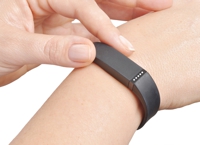 Fitbit is one of the leading companies in the market for activity trackers. Whilst pedometers have been around for a long time, Fitbit has truly revolutionised the way we analyse our own personal metrics. Fitbit offers a wide range of products that are easily concealed or that can be worn on the wrist and they all sync to your smart phone to show you personal data with regards to steps taken, stairs climbed, quality of sleep, as well as other great functions.
Fitbit is one of the leading companies in the market for activity trackers. Whilst pedometers have been around for a long time, Fitbit has truly revolutionised the way we analyse our own personal metrics. Fitbit offers a wide range of products that are easily concealed or that can be worn on the wrist and they all sync to your smart phone to show you personal data with regards to steps taken, stairs climbed, quality of sleep, as well as other great functions.
See Also: Fitness Trackers | Smart Watches | Apple Watch | Protein
Shops With Fitbit Offers
Fitbit Buying Guide
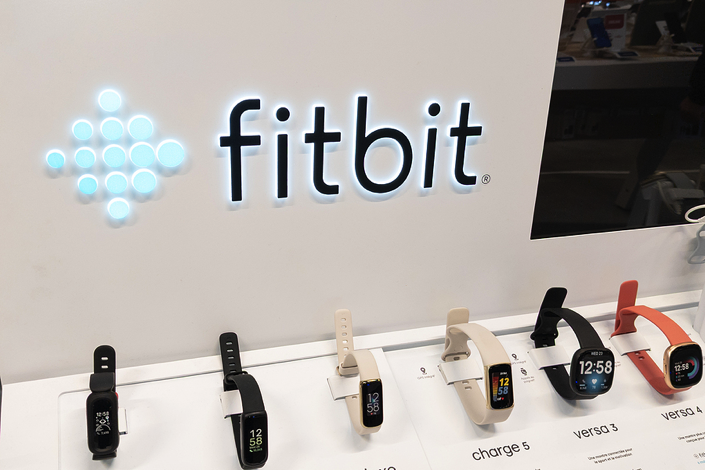
There are a whole host of fitness trackers on the market, with the ability to monitor virtually any type of activity you can throw at them. From trackers that will tell you how good your golf swing is through to ones that know how far and how fast you’ve been running, if you want to know what your exercise regime is like in minute detail then you could do an awful lot worse than to pick yourself up a fitness band.
One of the companies that has taken advantage of this boom in the fitness industry is Fitbit. The San Francisco based company founded by James Park and Eric Friedman has made such inroads into the fitness tracking market that they are one of the best known products on the market, with devices that can monitor all sorts of important and interesting things.
They’re so good and so well-known, in fact, that we’ve written a buying guide just for them. This is a look at a specific brand of fitness tracker, so we’re not going to talk a huge amount about what the devices do in general here. Don’t worry, though, as we’ve written a buying guide for fitness trackers in general that will tell you all you need to know about the fitness tracker market before you hit the shops.
With six different Fitbit models on the market plus a Fitbit branded set of smart scales, it’s fair to say that we’ve got our work cut out. Here, then, we’ll talk you through each of the Fitbit options you’ll be faced with and let you know all of the most important information so you know exactly what you’re looking at spending your money on.
Fitbit Inspire
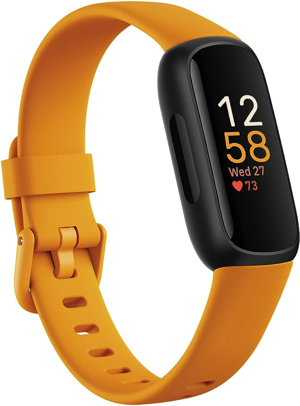 If you’re after an easy to use fitness device that does the basics and not much besides, the Fitbit Inspire is the place to start. It is aimed at newcomers to the fitness tracking scene, but don’t let that fool you into thinking that it isn’t good at what it does. It has the ability to track what you get up to in over 20 sports, with the Inspire 3 being the first in the range to have a colour OLED screen. Even if you use the always-on display, which is ideal for ease of reading the information from your wrist, you can still expect the battery to last for around ten days before you’ll need to charge it.
If you’re after an easy to use fitness device that does the basics and not much besides, the Fitbit Inspire is the place to start. It is aimed at newcomers to the fitness tracking scene, but don’t let that fool you into thinking that it isn’t good at what it does. It has the ability to track what you get up to in over 20 sports, with the Inspire 3 being the first in the range to have a colour OLED screen. Even if you use the always-on display, which is ideal for ease of reading the information from your wrist, you can still expect the battery to last for around ten days before you’ll need to charge it.
The main appeal of the Inspire is that it is easy to operate and offers you all of your health and fitness stats in a useful way. You can track your heart-rate 24/7, for example, whilst your sleep is also monitored and can be combined with the heart-rate information to give you an analysis of your stress levels, amongst other things. If you haven’t got on your feet for a while then the Inspire 3 can remind you to do so, which is ideal for those with a more sedentary lifestyle who might need to be nudged to get up and about. Those having a stressful day can turn to the 2-minute guided breathing built-in.
The Inspire 3 is the first in the range to track oxygen levels in your blood thanks to its SpO2 monitoring. To make the most of it then you’ll need to subscribe to Fitbit Premium, which is an added expense that you will want to add in to your costings. All of the Fitbit Inspires follow a similar design, which is long and sleek and looks unmistakably like some sort of fitness band rather than pretending to be a watch. The Inspire 3 is slightly wider and longer than the Inspire 2, whilst the silicone band has been redesigned. The unit itself only comes in black, but the bands can be black, lilac or ‘morning glow’.
Ultimately, the Inspire is a fitness tracker first and foremost. On that front, it does a great job and its lightweight nature and small size means that it can be integrated into your fitness regime without you even really noticing. There are two buttons on either side of the device, which can be used to wake it up as well as to scroll through the menus. As you might imagine, most of the major sports are covered by the tracking, such as walking, running, swimming and even High Intensity Interval Training, with some less common ones like golf and weights also tracked.
Fitbit Luxe
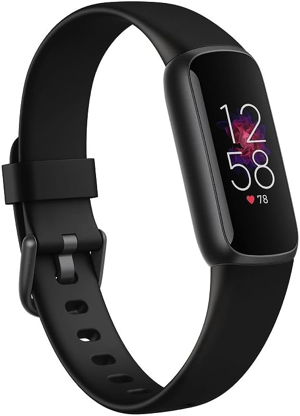 There is an argument that the Fitbit Luxe is a matter of form over function. That is because plenty of thought has gone into what the device looks like, making it one of the most attractive devices on the market. It doesn’t mean that it is useless, offering plenty of decent functions for those of you that want to use it as the fitness tracker it is designed as. It is just that there are other devices that offer a lot more than this if you’re the sort of person that likes to take a deep-dive on your stats and information. It really does look beautiful, though, thanks in no small part to the AMOLED touchscreen.
There is an argument that the Fitbit Luxe is a matter of form over function. That is because plenty of thought has gone into what the device looks like, making it one of the most attractive devices on the market. It doesn’t mean that it is useless, offering plenty of decent functions for those of you that want to use it as the fitness tracker it is designed as. It is just that there are other devices that offer a lot more than this if you’re the sort of person that likes to take a deep-dive on your stats and information. It really does look beautiful, though, thanks in no small part to the AMOLED touchscreen.
If you are indeed about the looks first and foremost, you’ll want to forgo the Classic black look and instead opt for the likes of the Lunar White / Soft Gold option or the Orchid / Platinum Stainless Steel models. There are even special edition versions made in conjunction with the jewellery brand Gorjana. Ultimately, though, it is all about the tracking rather than the looks and you’ll get all of the standard tracking that you’d expect on that front. Your steps will be counted, as you’d imagine, although it doesn’t know if you’ve gone up or down a set of them to change floor.
The device features a heart-rate tracker as well as SpO2 tracking to monitor your blood oxygen levels. The main thing that the device is missing is GPS functionality, meaning that you won’t be able to track your location unless you’ve got your phone with you. The lack of such features allows it to be a much smaller and sleeker device than some others in the Fitbit range, so it is worth imaging what it would look like on your wrist. Those of you that tend to wear big chunky watches will likely find that this seems a lot smaller than you’re used to when you’re wearing it.
The ‘core’ activities that you can track by default using the device are the likes of swimming, running and cycling. If you want to go a bit further then you can add more unusual things, from kickboxing to yoga with a few more in between. The Luxe uses a touchscreen, which isn’t ideal if you’re trying to use it whilst swimming or it rains whilst you’re out on a run. The rest of the time it works well, allowing for easy navigation around the various menus. Fitbit have now made it common for their devices to require a Fitbit Premium subscription to get the most out of them and the Luxe is no exception.
Fitbit Sense
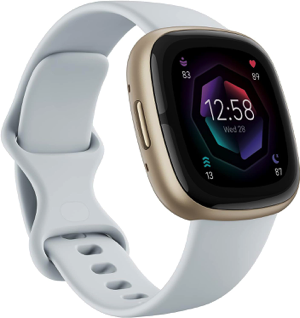 There will be plenty of people out there looking for a fitness tracker that looks like a watch, but hoping to steer clear of those made by the likes of Apple and Samsung. If you fit into that category then the Fitbit Sense is the device that you’ll want to have a look out for. It is like a rounded square in its design, if that makes any sense, and it comes complete with the likes of heart-rate and ECG monitoring. It is one of the smallest smartwatches on the market, measuring 40.5 millimetres across and being 12.35 millimetres thick, whilst the OLED display is 1.58 inches.
There will be plenty of people out there looking for a fitness tracker that looks like a watch, but hoping to steer clear of those made by the likes of Apple and Samsung. If you fit into that category then the Fitbit Sense is the device that you’ll want to have a look out for. It is like a rounded square in its design, if that makes any sense, and it comes complete with the likes of heart-rate and ECG monitoring. It is one of the smallest smartwatches on the market, measuring 40.5 millimetres across and being 12.35 millimetres thick, whilst the OLED display is 1.58 inches.
You can set the screen up to be always-on, or you can choose to only have it light up when you turn your wrist or press one of the buttons on the side. If you’re the sort of person that likes to constantly change the look of your watch then you’ll want to use the Fitbit app to add any one of the hundreds of watch faces that you can upload onto it. The battery can last up to six days before you’ll need to charge it again, with that being reduced when options like the always-on display are in use. The touchscreen is relatively intuitive, so you can find your way around it well enough.
As well as being a fitness tracker, the watch can also receive basic notifications from your phone. If you want to, you can even use it to speak to Amazon’s Alexa or the Google Assistant. You will find that some features are only available on Android, with Apple not allowing voice dictation response to messages, for example. Ultimately, though, the main thing you’ll use this for is tracking the likes of your sleep, skin temperature and for keeping track of your various fitness activities. This works best with a Fitbit Premium subscription, which you’ll need to pay extra for.
As you’ll have come to expect from Fitbit devices, the Fitbit Sense can record what you get up to when you’re doing as many as 20 different exercises. Golf and tennis sit alongside the likes of running and walking, with numerous other things in between. It will track the more vigorous activities automatically, whilst others will need to be tracked manually. There is built-in GPS to ensure that your distance and route are tracked accurately, provided you aren’t running in a circle. All in all, this is a solid fitness tracker even if not particularly remarkable compared to some of those on the market.
Fitbit Versa
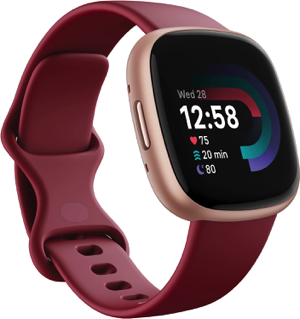 The Fitbit Versa is now up to 4 on the model front, with all of them aiming to be something of a rival to the likes of the Apple Watch. If you like its style but want to keep the features to a minimum then the Fitbit Versa Lite might be what you want to look out for. The Versa itself is available in silver, rose gold and black, with the strap coming in numerous different options in order to mix things up a bit. If you want to get some sort of sense of what the device itself looks like, the fact that Fitbit call the shape a ‘Squircle’ gives you all of the information you need.
The Fitbit Versa is now up to 4 on the model front, with all of them aiming to be something of a rival to the likes of the Apple Watch. If you like its style but want to keep the features to a minimum then the Fitbit Versa Lite might be what you want to look out for. The Versa itself is available in silver, rose gold and black, with the strap coming in numerous different options in order to mix things up a bit. If you want to get some sort of sense of what the device itself looks like, the fact that Fitbit call the shape a ‘Squircle’ gives you all of the information you need.
The Versa is notable for its lack of ostentatiousness, being relatively unassuming in its look and design. It is made from anodised aluminium, making it one of the lightest smartwatches you can get. On its lefthand side there is a wake-up button that also acts as the back button, whilst on the right there are buttons to pause and finish your workout. The touchscreen is colourful and vibrant, whilst the brightness means that you’ll be able to see it in bright sunlight or whilst underwater. It is, of course, touchscreen, making it easy enough to navigate around as needed.
There are strong similarities between the Versa 4 and the Sense 2, with the Versa lacking the likes of electrocardiogram, electrodermal activity and skin temperature readings. Of course, the fact that those features aren’t on this device won’t make much of a difference to most people, so if you think you can live without then you’ll save money by opting for the Versa. You must remember to add the price of Fitbit Premium into that, though, if you want to get the most out of the fitness tracking aspect of the Versa, given the fact that Fitbit now require a subscription to unlock all content.
The Versa 4 is user-friendly, offering all of the usual tracking of the likes of steps, SpO2 and various sports. You can also use the in-built GPS to track your general movement. Wear it overnight and it will keep an eye on your sleep patterns, which can offer vital insight if you’re hoping to figure out why you’re not sleeping very well. The smartwatch nature of the device means that you can use the likes of Google Wallet, Google Maps and Amazon’s Alexa voice assistant, though weirdly not Google Assistant at the time of writing. Ultimately, though, it is all about the fitness tracking and on that front it does what you’d want it to.
The Fitbit Zip
 The Zip is Fitbit’s true entry-level device. To suggest that it isn’t exactly feature heavy would be under-stating things to the extreme. The Zip is, in essence, a souped up pedometer that not only tracks your steps but also guesstimates the amount of calories you’ve burned off and the distance that you’ve travelled.
The Zip is Fitbit’s true entry-level device. To suggest that it isn’t exactly feature heavy would be under-stating things to the extreme. The Zip is, in essence, a souped up pedometer that not only tracks your steps but also guesstimates the amount of calories you’ve burned off and the distance that you’ve travelled.
There are numerous pros to getting a Zip if all you’re really looking for is the most basic of fitness apps. It comes in numerous different fun and exciting colours, for example. It is also operated by an inexpensive coin battery that means it will have plenty of juice for months, rather than days.
The Zip is not a wrist based fitness tracker but rather clips onto your clothing or fits easily enough into your pocket. The New York Times recently published a piece arguing that trackers that clip onto your clothes can actually offer more accurate feedback than wrist-based alternatives. It has an LCD display that allows you cycle through your steps, calories and distance covered as the day goes on.
For every pro there is a con, however, and the Fitbit Zip is no exception to that rule. The fact that it is so small and unobtrusive means that you aren’t always aware it’s on your clothing. No bad thing if you want it to go unnoticed, admittedly, but problematic when you accidentally throw it into the washing machine with the jogging bottoms you wore to the gym. It can also get lost very easily. It might be the cheapest Fitbit around, but that doesn’t count for much when you’ve got to keep buying replacements for the ones that disappeared half way around your morning jog.
The lack of features means there’s no sleep tracking on the device, nor can you set silent alarms or discover how many staircases you’ve climbed in a day. None of those things are essential if you’re hoping to pick up a fitness tracker that will do the simple things without the frills, but they are interesting if you’re the sort of person that does more than just go for a quick walk around the block. It’s also worth bearing in mind that the LCD screen has no backlight, so you won’t be able to see a thing on it in the dark.
The Fitbit app is a good one, and the Zip is able to make use of it just as any of the company’s other products are. At the end of the week you get a summary of your achievements and you can compare yourself to your friends. You can also cheer or, if you’re a bit mean, taunt your friends from within the app itself. The other thing that is quite nice is that you get achievement badges the more that you use your device.
As well as telling you information about how much exercise you’ve done during the week, the app is also handy as you can give it more specific information about what type of exercise you’ve done. Two hours of gardening, for example, will be harder work than two hours of just pottering about the place, so you can specify that you’ve been using your green fingers within the app and your calorie count will probably adjust accordingly.
The Fitbit One
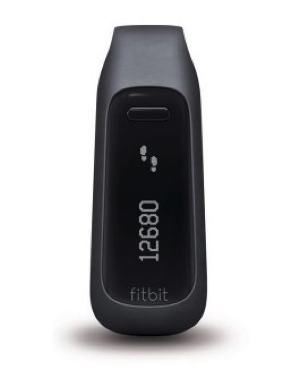 The first step up, no pun intended, from the Fitbit Zip is the Fitbit One. It is similar in so much as it still clips onto your belt or fits in your pocket rather than straps around your wrist like a watch, yet it is different in virtually every other aspect from its more entry-level cousin.
The first step up, no pun intended, from the Fitbit Zip is the Fitbit One. It is similar in so much as it still clips onto your belt or fits in your pocket rather than straps around your wrist like a watch, yet it is different in virtually every other aspect from its more entry-level cousin.
The fist thing to note is the style of the device. Unlike the Zip which comes in bright, sometimes garish colours, the Fitbit One is more understated and looks much sleeker and smarter. It also has an altimeter in it, meaning you can monitor how many flights of stairs you walk up and down each day. You might not think that’s hugely important, but walk up and down a flight of stairs and then walk the equivalent distance on flat ground and then make a note of which one leaves you the most out of breath.
It is said that a healthy person should walk over 10,000 steps a day, and the One is a nifty little device that will keep you updated about how far along that particular challenge you are. It monitors all of your activity, too, so you can also have a look at your ‘active minutes’ if you’re not the sort of person who has the time to go walking all that often.
The One comes with a wristband, allowing you to wear it at night so that it can monitor your sleeping habits. It not only tells you how long you slept for but also how well, using its sensors to monitor deep sleep compared to restlessness. Perhaps you feel like you sleep quite well anyway and don’t really care, but wouldn’t you like to know if alcohol affects your sleeping pattern, or if you really do have nightmares when you eat cheese?
The One also features a vibration motor, meaning that you can use it to set a silent alarm to wake you when it’s time to get up. The gentle movement wakes you up in a more considered manner, so you aren’t shocked into consciousness by a loud and unexpected noise. As you’d expect from a device that can wake you up at a specific time, the One features a clock, a stopwatch and a timer.
Though the One’s battery isn’t as long-lasting as its cheaper counterpart’s, it will still give you around 10-11 days worth of use before you’ll need to re-charge it. Not bad, all things considered. It also has a ‘low power mode’ that it will go into when its nearly out of battery. You won’t be able to use the screen when that’s on, but it will still continue to monitor your activity and will sync the details to the app when you connect it.
The Fitbit One is not waterproof, yet it should be ok if it’s caught in a heavy downpour and there have even been reports of it surviving trips through the washing machine. Its rugged nature means its unlikely to be bothered by keys or coins scratching it, too.
Much like the Zip, however, the fact that the One is not a wrist-based band means you’re still going to have to remember where you’ve clipped it. If you forget you might put it to the washing machine test more often than is healthy, fail to change it from one item of clothing to another and therefore to a whole load of exercise that goes completely unrecorded, or even lose it altogether.
Fitbit can be a little bit naughty with their choice of charging cable and the One doesn’t escape their proprietary adapter treatment. In essence that’s not the end of the whole, or course, but it does mean that if you’re the sort of person who likes to have a charger at home, at work and in the car then you’re going to end up shelling out for third party chargers. Finally as far as criticisms go, the stopwatch we mentioned earlier is started by a button on the side of the device, meaning that you can sometimes accidentally start it or stop it with a gentle push. Not a nightmare, but a bit of a pain if you’re trying to track your run and you press the side of the watch unintentionally midway through and the timer stops.
Despite the fact that it is not exactly one of the all-singing-all-dancing fitness monitors, the Fitbit One is surprisingly good and accurate at monitoring your steps and various forms of exercise. If you’re absolutely dead set against having a wrist-based fitness tracker than this little beauty is well and truly worthy of your consideration.
The Fitbit Flex
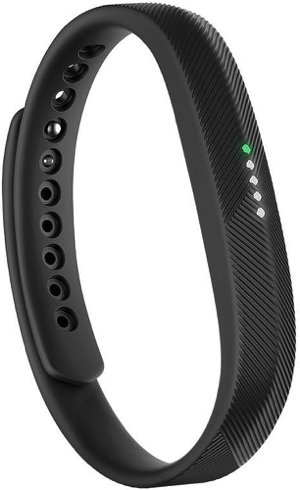 The first of Fitbit’s wrist best fitness trackers, the Fitbit Flex is, in some ways, a bit of a step down from the Fitbit One. Yes you can wear it around your wrist so you’re less likely to lose it, but does it give you as much information in as simple a manner as its non-wrist based counterpart? Not really, no.
The first of Fitbit’s wrist best fitness trackers, the Fitbit Flex is, in some ways, a bit of a step down from the Fitbit One. Yes you can wear it around your wrist so you’re less likely to lose it, but does it give you as much information in as simple a manner as its non-wrist based counterpart? Not really, no.
The reality is that the Flex needs to be linked up to your phone or computer to give you any truly useful information. The device itself has a row of LED lights that indicates different things depending on how many times you tap it. Each indicator light represents 20 percent of your total goal and a blinking light is the segment of the goal you’re working on at that moment. So if you have three solid LEDs and one blinking one you’re somewhere between 60 and 80% of your total goal. You’ll also get a gentle vibration on your wrist from the device when you hit your target.
The question you’ll probably be asking after reading that is: How do I know what my goal is? A fair question, and the answer is that you’ll have set your goal using the Fitbit app on your mobile phone or computer – see why we think the computer is so important to the use of the Flex?
Although the Flex doesn’t offer you the same visual benefits as the One does because of its lack of display, it does give you more flexibility in how you use it. The Flex itself is actually a small device about the size of a thumb drive. It fits inside the wristband, so you can change the band you use if you’d like a different coloured one on your wrist. It helps to keep things fresh and means you can have a different Flex band depending on what you’re doing with your day.
You get two bands with your Flex, small and large. The small is for wrists that are between 140 and 175 mm in width, the large is for 161 to 209 mm. You’ve got a choice of colours from black, slate, tangerine, teal, navy, violet, blue, lime, pink or red. It’s quire easy to get the app in and out of the band, which is just as well as you’ll need to charge it every five days or so.
Another benefit of the Flex is that it’s fully waterproof, so you can have a bath or a shower or even go for a swim without fear of ruining the device. Admittedly Fitbit recommend against exposing it to water for a prolonged period of time, but that’s presumably more to cover their own back than anything else.
The Flex has a MEMS 3-axis accelerometer as part of its design. That means that it can track how many steps you take in a day and calculate roughly how far you’ve walked and how many calories you’ve burned. It also measures your sleeping patterns if you wear it at night. Don’t be confused by the waterproof nature of the Flex, however. It won’t register a swim as anything important. Similarly it won’t calculate any cycling very accurately either.
Much like with the One, the Fitbit app is the handy tool you’ll need to use to interact with your device. It’s where you’ll see more precise measurements of the things you’ve done, such as how many steps you’ve taken, but it’s also where you’ll go to set the targets you want to achieve in the day and where you’ll need to look to see how close you are to achieving them.
You can also use your app to input your weight any time you fancy and you can log meals to see how many calories you’re adding to your day compared to how many you’re burning off due to your exercise. The more accurate information you enter into the Fitbit the more you’ll get out of the app and the software that the device uses.
The Fitbit Flex’s sleep monitoring is activated by tapping the device quickly five times. It will then track the number of hours you are asleep and the quality of that sleep. You then tap the device five more times in quick succession when you wake up and it comes out of sleep mode. The device also has a silent alarm that will gently vibrate to wake you up nicely in the morning. How do you set your alarm? How else but through your phone or computer, of course!
The Fitbit Flex connects to your computer via a Wireless Sync Dongle that is suppled with the device. This plugs into your computer’s USB port and it uses Bluetooth 4.0 to transfer the data from the Flex to your device. It does this automatically when it’s within about 20 feet of the connected dongle. You just need to download the Fitbit Connect application for your Mac or PC.
If you don’t have a computer or tend to not use one very regularly then you’ll want to download the Fitbit application for your iOS or Android compatible device. It still syncs via Bluetooth but obviously you don’t need to plug in the supplied dongle to your phone.
The Fitbit Flex is not the best device on the market, but if you’re after a basic fitness band that will get you or a less-than-active friend or family member up and about then this is one to consider. It’s at its best when you link it up to your phone or computer and you’ll only really be able to understand what you’ve achieved with your day when you upload the information to the app’s dashboard. It doesn’t offer you as much info at first hand as the Fitbit One, but it’s a wrist-based device that will get you on the move.
The Fitbit Charge
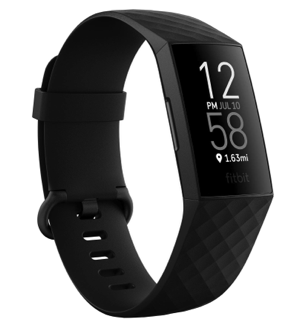 If you want a wrist-based activity tracker that will give you more information when you look at it than merely the blinking of a few lights then you’ll want to give some serious consideration to the next device in the Fitbit range, the Charge.
If you want a wrist-based activity tracker that will give you more information when you look at it than merely the blinking of a few lights then you’ll want to give some serious consideration to the next device in the Fitbit range, the Charge.
The Charge is a step up from the Flex in many ways, not just what it’s able to show you on its screen. It features the same MEMS 3-axis accelerometer as the other Fitbit devices, but it also boasts an altimeter that can measure how many floors you’ve climbed. If you live in a hilly area and are concerned that it won’t count for anything then you’d be wrong – every 10 foot elevation that you walk counts as one flight of stairs.
Unlike the Fitbit Flex, the Charge is one complete unit, so you can’t swap the band out for different colours when you get bored. It comes in black, slate, burgundy or blue. The strap itself is flexible and textured, made as it is of a durable elastomer material that you’ll probably recognise if you’ve ever owned a sports watch. It has a clasp that is made up of two small metal strips that push in to slots in the material itself. It’s reasonably durable, but if you catch it wrong then it can come undone remarkably easily. Not ideal if you’re a keen runner or someone that tends to move their arms around a lot.
The Charge’s battery lasts seven days, according to Fitbit, which is a couple of days longer than the entry-level wristband, the Flex. You can, of course, check out how much battery your device has left by logging in to the Fitbit app, but you’ll also see that a battery sign flashes on the screen when it’s running low and, helpfully, you’ll also get an email telling you it needs charging.
Unlike the Flex, the Charge does not boast any waterproof capabilities. Now that doesn’t mean you need to panic if you get caught in the rain wearing the device, but it does mean that you should remember to take it off before you jump in the shower after a tough workout, or before you treat yourself to a bath to ease your aching muscles.
Like all of the Fitbit devices, you’ll get the most out of using your Charge if you link it up to your phone or computer and keep an eye on the ever expanding statistics within the Fitbit app. Again, the more information you put into the app the more useful it will be in figuring out how much weight you’re losing, how many calories you’re burning and so on. If you go for a run, for example, then make sure you log in to the app and tell it that you were running, not walking, during your period of heavy exercise.
Many people also find that they get more out of using their Fitbit by linking it with a third party app. We’ve already mentioned myfitnesspal, which is a great way to log specific foods and so on, but there’s also apps such as Mobile Run that can use your iPhone’s GPS to track your favourite routes. This isn’t yet available for Windows or Android but it undoubtedly will be soon enough.
Like the Fitbit Flex, the Charge has a sleep monitoring function. Unlike the Flex, though, you don’t need to tell the Charge when you’re hitting the sack as it will figure it out automatically. The sleep monitoring itself is improved over earlier models too, meaning the data you’ll get will be more accurate. Much like the Flex you can also set a silent alarm on the Charge that will vibrate to wake you up, but no-one else that you might share a room with.
The Charge continues to count your calories form the information you put into it and also figure out how many calories your burning off through exercise. You need to give the Fitbit app information like your gender, height and weight so that its calculations are more accurate. The more regularly that you sync your device with the app on your computer or phone, the more accurate the info it gives you back will be. If you don’t sync then the Fitbit will just guesstimate the info it provides to you.
The screen on the Fitbit Charge is useful for a whole host of reasons, not least of which is that it can display incoming calls if you pair it up to your mobile and link it via Bluetooth. The device will also vibrate when a call’s coming in, meaning that you can have your phone on silent if you’re in an important meeting or the like.
The other information that you can read right off the device itself is stuff that you’ll likely be more interested in than the identity of an incoming caller. You activate the Charge’s display by either tapping the device itself or else pressing a button on the side of the Charge. That will allow you to scroll through the time, the amount of steps that you’ve taken, your active minutes, the number of floors you’ve climbed and how many calories you’ve burned. You tell the device what you want to be able to read via the app.
The Charge is unquestionably an upgrade on the Flex, the One and the Zip. The fact that it gives you all of the relevant info from your exercise right there on your wrist also makes it significantly better option than other similarly priced fitness bands. The only real question you’ll need to ask yourself is: Is it worth thinking about paying a little bit more for the Charge HR? It’s a question we’ll look to answer in the next section of our buying guide.
The Fitbit Charge HR
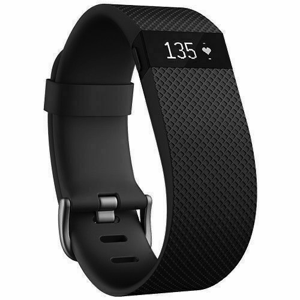 The Fitbit Charge HR is, as you’d expect, a slight upgrade from the Charge. The HR is the main thing to know about here – it stands for Heart Rate and is included because the newer model features an ‘always on’ heart rate monitor. It is not Fitbit’s premier device, that title goes to the Surge and we’ll discuss that next, but it is the most advanced of the fitness trackers that the casual user might consider picking up.
The Fitbit Charge HR is, as you’d expect, a slight upgrade from the Charge. The HR is the main thing to know about here – it stands for Heart Rate and is included because the newer model features an ‘always on’ heart rate monitor. It is not Fitbit’s premier device, that title goes to the Surge and we’ll discuss that next, but it is the most advanced of the fitness trackers that the casual user might consider picking up.
We’re not going to repeat ourselves regarding what the Charge HR can do that we’ve already told you about in our review of the more minimalist Charge, but sufficed to say that there is nothing the Charge can do that the HR can’t, whilst the HR offers more features than the earlier alternative.
The key thing that both devices offer that might sway you into choosing one of them instead of Jawbone’s UP24 – the nearest like-for-like competitor – is the information that is displayed directly on the display. The biggest difference between the two, of course is the aforementioned heart rate monitor. This delivers constant heart rate monitoring that you can view either through the device or your phone. Because it works through the wrist rather than a chest strap, you can monitor your heart rate during the day and night if you leave it on when you’re asleep.
The device gathers data using Fitbit’s proprietary PurePulse optical heart-rate technology. This uses LED lights on the bottom of the device to detect your blood volume and capillary size changes when under pressure. The LED lights reflect onto your skin to detect your blood’s volume changes. The lights are low power and won’t burn your skin, plus they will shut down if your device stops working properly for any reason.
PurePulse uses algorithms that track your workout intensity and calorie burn more accurately. You’ll also be told whether you’re in one of three heart rate zones by an icon on the device. The zones will aid you in the optimisation of your workout as they’ll let you target different training intensities. Your maximum heart rate is worked out using the generally accepted formula of 220 minus your age. Drop to below 50% of of your maximum heart rate and whatever you’re doing won’t be considered as exercise.
If you’re hitting somewhere between 50-69% of your maximum heart rate then Fitbit will class what you’re doing as being in the Fat Burn Zone. The optimal Cardio Zone is between 70-84% of your maximum heart rate and is used in high-intensity exercise. Finally, the Peak Heart Rate Zone is anything greater than 85% of your maximum. This is what you’ll likely see when you’re doing short, intense exercises that will improve your speed and performance. You can also use the app to create your own custom heart rate zone, should you wish to.
The app remains your main point of call for all of the more specific data you may need, and if you’re upgrading to the HR from one of the earlier Fitbit models then you’ll see a new ‘Resting BPM’ field. This is what your heart has been doing whilst you’ve been asleep or in a state of extreme relaxation. The fact that your heart rate is monitored throughout the day and night makes the Charge HR a better bet than other activity trackers, and you can then view the information it has collected in a handy graph through the app. If you remember to press the button on the side of the device when you begin your exercise then you’ll be able to see your heart rate and the amount of time spent in each zone for the duration of your workout.
The key of the heart rate monitor, of course, is that the more your device knows about your heart rate, the more accurately it will be able to assess your calorie burn – crucial if you’re using information from your Fitbit to help you to lose weight. Much like you can measure the length of your stride in order to allow the device to figure out how far you’ve walked more accurately when matched up against the amount of steps you’ve taken, the crucial bit of data in calorie burn is the amount your heart beats.
The Charge HR’s band is slightly slimmer than the Charge, though the main difference between the two is that the HR comes with a watch-like clasp. It is more secure than the Charge’s popper-esque band and so is far less likely to come loose and fall off. Some users have reported a skin irritation from the strap, but it’s not a common complaint. You can get the band in black, blue, plum or tangerine.
The Charge HR is Fitbit’s device for people that are looking to get fit but don’t consider themselves to be power users. As such the small amount of extra money you’ll pay compared to the simpler Charge is probably worth the investment. If you want to get more active and have a way of monitoring your progress but don’t envisage yourself running marathons any time soon then the Charge HR is the band we think you should consider most seriously.
The Fitbit Surge
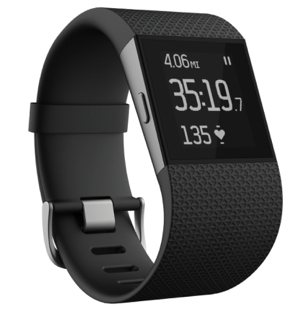 The final Fitbit made fitness tracker that we need to tell you about is the Fitbit Surge. This is the company’s premier fitness device and it is the one with all of the bells and whistles. Whether you think it’s worth spending the extra money on when compared to the Charge HR will be a matter of opinion, but typically speaking we reckon it will depend largely on how seriously you take your fitness regime.
The final Fitbit made fitness tracker that we need to tell you about is the Fitbit Surge. This is the company’s premier fitness device and it is the one with all of the bells and whistles. Whether you think it’s worth spending the extra money on when compared to the Charge HR will be a matter of opinion, but typically speaking we reckon it will depend largely on how seriously you take your fitness regime.
Like all of the other Fitbits, the Surge has a MEMS 3-axis accelerometer as the altimeter that the Charge onwards boasts. It also has the same heart rate monitor as the Charge HR, so we won’t go into too much detail about how that works as you’ve probably already read it. Unlike any of Fitbit’s other devices, though, the Surge also features a gyroscope, a compass, an ambient light sensor and GPS functionality. In other words, it is the daddy of Fitbit’s fitness trackers.
The other main thing that the Surge offers that none of the other Fitbits do – nor most of the other fitness trackers on the market, to be fair – is the wide range of sports and exercises that it can measure. Running, cross-training, hiking, cardio workouts, strength workouts and more can all be measured by the wrist-based device.
The fact that the Surge’s display is bigger also means that it can give you more comprehensive real-time stats and workout summaries right on your wrist without the need to delve into the app. Everything from workout intensity and calories burned can be displayed on the screen. The built-in GPS means that, unlike with other trackers, you’re not dependent on your phone to track your movement, either.
Much like the Charge HR, the Surge will monitor your sleeping pattern and let you know how good the quality is. It also takes your heart rate measurements during the night, so it will be able to give you a far more accurate reflection of your overall fitness, even when you’re resting. The Surge features the same PurePulse technology that we told you about when we were looking at the Charge HR.
The Surge has a seven day battery, according to Fitbit, so it sits alongside the Charge HR on that front. If you use the GPS function regularly, though, you’ll probably find that that shortens the battery life quite a bit. Also much like the HR, it isn’t recommended that you wear your watch whilst you have a bath or go swimming. Where the HR is water resistant to 1 Atmosphere, or around 2 metres, the Surge can go to 5 Atmospheres, meaning that it’s more capable of hitting the 10 metre mark without causing too much trouble. You can, apparently, wear it whilst swimming in shallow waters but it’s a bit of a ‘do so at your own risk’ type thing.
The design of the Surge might offer a slight surprise to those of you that are used to standard fitness trackers. It is much more like a typical sports watch than even the Fitbit Charge. It has a touch screen display with backlit, customisable watch faces. You can navigate through real-time statistics, your workout apps and your alarms with a swipe. Measurement-wise it comes in at 34 mm in width, with the display itself measuring 24.36 mm x 20.88 mm. You can buy small, large or extra large wristbands. It also has a watch-like strap and buckle, like the Charge HR, and comes in black, blue or tangerine. Also like the Charge HR, some users have reported getting a rash from the Surge – something to bear in mind if you have sensitive skin.
More casual users can, of course, look at the Surge as a fitness tracking option, but you’re unlikely to get a huge amount from it that you can’t get from the cheaper Charge HR. The Surge is really aimed more at the serious fitness enthusiast market, with a degree of functionality that make it worth serious consideration if you’re a power user.
The Fitbit Aria
 The last thing we need to tell you about from the world of Fitbit is the company’s Wi-Fi enabled smart scales, the Aria. This device uses your home Wi-Fi server in order to connect to Fitbit’s servers and then keep track of all of the most important statistics about your size and weight.
The last thing we need to tell you about from the world of Fitbit is the company’s Wi-Fi enabled smart scales, the Aria. This device uses your home Wi-Fi server in order to connect to Fitbit’s servers and then keep track of all of the most important statistics about your size and weight.
The Aria can analyse your weight, your body fat percentage and your BMI. All of the most crucial stats for people trying to lose weight. You can set yourself weight goals and the Aria will help you to work out a daily calorie plan to aid you in reaching your target.
The real beauty of the Aria is that, once it’s set up, it can be used to track the information of up to eight people. That means you can monitor the progress of your entire family through Fitbit’s website. If you link up one of the fitness trackers then you’ll have about the most accurate information you could hope to find right at your fingertips.
Much like all of the Fitbit trackers, the Aria works best when you can view its information via the app on your computer or smartphone. Also like the trackers, you can set yourself goals and achieve badges of recognition for your achievements. Because it tracks your progress daily, the Aria helps to keep you motivated on your journey towards full fitness.




